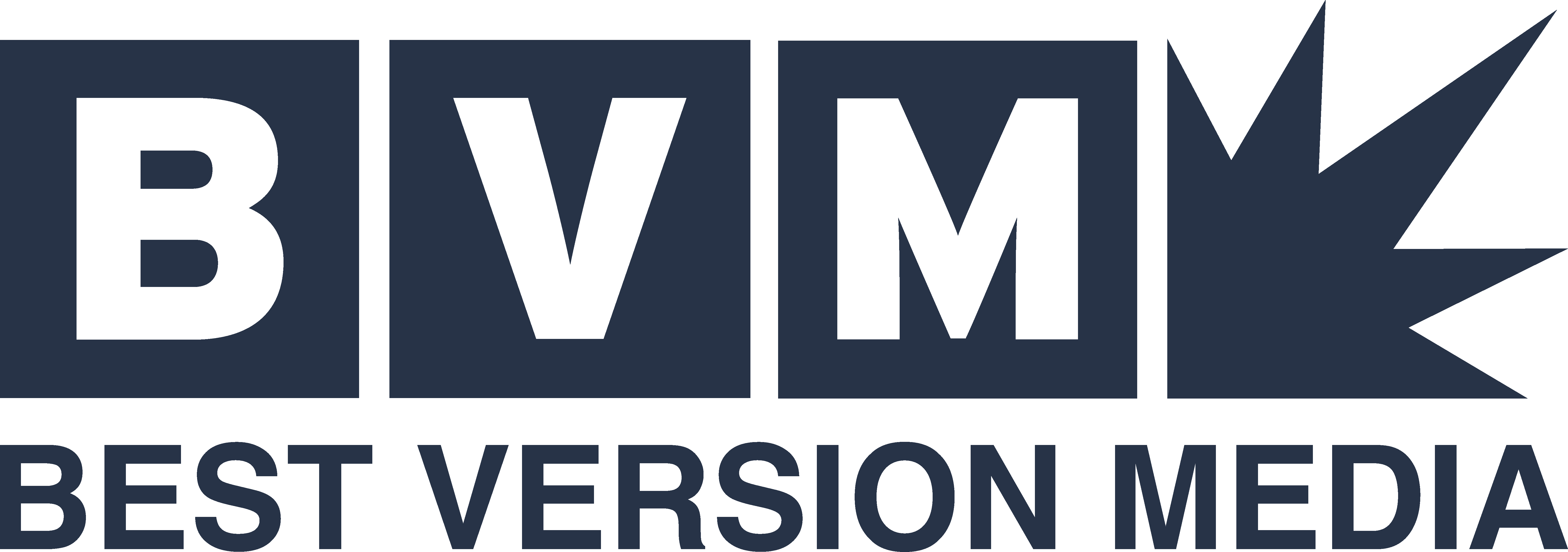
The Ultimate Marketing Checklist for Local Businesses in 2025
Local businesses looking to grow and compete in their markets must embrace a holistic marketing strategy that blends digital precisions with real-world presence. In order to thrive, this strategy needs to align with evolving consumer habits, digital tools and trends.
The key to winning locally lies in showing up at all touchpoints where your customers are, both online and offline. Remaining relevant and standing out among competitors is perhaps more critical than ever before with consumer attention spread across multiple channels.
Here is the ultimate marketing checklist for local businesses in 2025, including actionable items and strategies that every company can implement in the digital, social media and print landscapes.
1. Determine Your Target Audience and Set Marketing Goals
Above anything else, determining the audience you want to target is the first step in any marketing strategy. From there, businesses should set their main marketing objectives. These processes can be done by:
- Researching your target market through surveys, social media insights or existing customer data
- Defining and analyzing local competitors and the strategies they’re using for success by visiting other businesses, talking to local consumers or analyzing Google Trends
- Determining trends and patterns in customer demographics, behaviors and needs
- Creating a marketing funnel that analyzes a customer’s journey from finding your business to making a purchase
- Aligning your marketing goals with business objectives using criteria such as SMART: specific, measurable, achievable, relevant and time-bound
- Prioritizing marketing goals that can have the most significant impact on your business and determining where you can set yourself apart
2. Verify and Optimize Your Google Business Profile
A customer’s first impression of a company often stems from viewing its Google Business Profile, or similar listing platforms such as Bing Places for Business. Optimizing each platform is important, but Google Business Profile should be a top priority as reveo.com states that 97% of users discover local businesses online, primarily through Google Business Profile.
Meanwhile, around 64% of consumers use a Google Business Profile to find contact details for a company. Those with a complete listing are 7x more likely to generate clicks. To optimize your Google Business Profile, businesses should:
- Simply claim and verify their profile
- Ensure that listing items like business name, address and phone number (NAP) are accurate
- Update things like hours, categories and services
- Upload high-quality, up-to-date photos
- Add booking, ordering or messaging features
- Post updates with events, offers or product features
A complete Google Business Profile can be particularly beneficial when it comes to voice or mobile queries, as it may increase visibility in “near me” searches and on Google Maps. According to reveo.com, about 72% of searchers will visit a business that is within five miles of their location, further highlighting the importance of appearing near the top of local search results.
3. Optimize Your Website With Hyperlocal SEO Techniques
First and foremost, businesses should make sure they have a website that provides consumers with a seamless and positive experience. According to Forbes, 88% of users won’t return to a site after a bad experience, while 57% of users won’t recommend a business with a poorly-designed website.
From there, fine-tuning the site with better SEO practices can help your business appear higher in search results. This can be done by:
- Creating landing pages for each location or service area
- Including keywords in meta descriptions, titles, headers and content
- Embedding Google Maps on your contact page
- Adding code to your website’s HTML that helps search engines better understand the content on your pages, also known as schema markup
- Putting yourself in position to earn backlinks from other websites with quality and informative content like blog posts, tips or guides
- Building citations in directories like Yelp, Bing Places and Apple Maps
Descriptive keywords can prove beneficial when it comes to appearing in search results. Rather than just “restaurants,” customers will often search for something more specific like, “best Italian restaurant in downtown Chicago open now.”
4. Prioritize Reputation Management
Reputation management involves actively monitoring and impacting how your business or brand is perceived in the digital space. By updating listings and tracking reviews, a company puts itself in a better position to be chosen by a customer. Businesses can enhance reputation management by:
- Making sure all listing information is complete and accurate
- Adding your business to more directories for additional visibility such as Yelp, Yellow Pages or chamber of commerce websites
- Creating a review generation strategy through email, SMS or in-store signage
- Setting up alerts to be made aware of new reviews
- Responding promptly and professionally to all reviews, positive or negative
- Promoting and encouraging reviews to customers on Google, Facebook or industry-specific platforms
Reputation management is one of the most significant parts of a company’s digital success. According to Bright Local, 89% of consumers are more likely to purchase from a business that responds to all reviews, positive and negative.
5. Engage Your Audience on Social Media
Social media remains one of the most powerful tools for enhancing the visibility of a business. Meta platforms Facebook and Instagram are two of the most popular social media hubs, as demandsage.com reports that Facebook has 2.11 billion active daily users globally, while Instagram has over 2 billion active monthly users.
Overall, a strong social media presence can build trust, encourage word-of-mouth and promote community engagement. Businesses should optimize their social media marketing efforts by:
- Choosing which platforms to utilize based on where your audience spends the most time, with Facebook ideal for community engagement, and Instagram best utilized for visual content, as well as timely, interactive posts that can engage followers
- Optimizing bios with local keywords and calls-to-action (CTAs)
- Linking your website and appointment pages
- Posting geo-targeted content with consistent branding
- Sharing engaging content, such as behind-the-scenes stories, customer or employee profiles, product spotlights, seasonal promotions or tutorial videos
- Using business-specific tools like Instagram Shopping or Facebook Events
- Responding to all comments and direct messages
- Joining local Facebook groups or forums
- Running giveaways with other local businesses
- Attempting to collaborate with neighborhood influencers or creators
- Using local hashtags and location stickers
Most social media platforms provide tools for hyperlocal targeting, giving businesses opportunities to engage with potential consumers who are close by and might be ready to make a purchase.
Also of note is the emergence of short-form video when it comes to social media marketing, with 73% of consumers using short-form videos when searching for new products or services, according to firework.com. Short-form interactive videos also have the potential to increase conversions by up to 80%.
6. Leverage Local Paid Digital Advertising
It’s important for businesses to do all they can to help potential consumers find them organically. However, paid advertising can prove to be one of the biggest drivers toward conversions for small and local businesses, particularly for those that are just starting out. No matter your budget, some form of digital advertising is crucial to drive foot traffic and website visits. Businesses should look to:
- Create display ads on Google for increased visibility
- Utilize Meta Ads through Facebook and Instagram, platforms that are both beneficial for geotargeting
- Take advantage of promoted posts on platforms like Yelp or Nextdoor
- Retarget potential consumers who have visited your website with local offers
- Promote events, flash sales or holiday-specific campaigns
Google Ads and Meta Ads dominate the landscape. Google Ads are present on Google Display Network, featuring a group of over 2 million websites, videos and apps that reach about 90% of internet users worldwide.
Meanwhile, 74% of consumers claim to use Meta’s platforms to discover brands or products online. Pairing a strong ad campaign strategy with a quality online presence and strong social media engagement can be a game-changer for businesses when it comes to increasing conversions.
7. Combine Print Advertising With Digital Efforts
Digital advertising will often be the top focus for many businesses in this day in age, but print advertising still holds significant value, especially when targeting a local audience. To drive foot traffic and keep their brand top of mind through print, businesses should:
- Print and display branded business cards, flyers and postcards, and distribute them locally
- Keep signage visible and updated through items like banners or window decals
- Advertise in neighborhood newsletters, magazines or newspapers
- Use direct mail campaigns targeting specific neighborhoods
- Include QR codes that link to your website, social media platforms or Google review page
- Partner with neighboring businesses for cross-promotion
- Sponsor local sports teams or community programs
- Offer “mention this ad” discounts on direct mail advertisements
According to Office Dasher, print ads still have a higher recall rate compared to digital ads, while 82% of consumers still trust print ads the most when making a purchasing decision. Print and digital advertising efforts don’t necessarily need to be equal when it comes to advertising budget. However, they should complement each other while creating greater brand visibility and targeting customers at multiple touchpoints.
8. Build and Nurture a Local Email List
Turning back to digital, email remains one of the greatest tools to reach consumers and increase customer retention. That makes building and utilizing a local email list of potential consumers and existing customers important. This can be done through:
- Collecting emails via in-store prompts, website pop ups or events
- Segmenting the list by customer interest or location
- Sending newsletters with local updates, promotions and loyalty rewards
- Utilizing tools that help businesses build, manage and automate email lists while tracking performance
- Testing different versions of your email campaigns to see what works best, and analyzing results
- Introducing loyalty or rewards programs to further grow your customer base and encourage repeat purchases
One of the best strategies for email campaigns involves personalization. Tailoring a message to specific customers or audiences creates a higher likelihood of that message being opened. Adobe for Business notes that emails with a personalized subject line have a 20% higher open rate than those with generic subject lines. Personalized emails have also produced a 139% increase in click rate.
9. Implement Mobile-Friendly, Localized Website Features
The frequency of consumers finding businesses and purchasing from them through mobile continues to increase, as 76% of adults in the United States use a smartphone to shop or buy online, with over 30% doing so on a weekly basis, according to Capital One Shopping.
While it is important to ensure things are optimized across all platforms, there are some specific items that businesses should prioritize to give themselves a better chance of converting mobile users, including:
- Ensuring a responsive and fast loading design
- Adding click-to-call and map integration
- Using customer testimonials from local patrons
- Displaying key information like hours, address and offers prominently on their home page
- Using live chat or AI bots for real-time assistance
As mentioned when optimizing your Google Business Profile, “near me” searches are commonplace for mobile users. After appearing in these searches, it is important the steps above are implemented to keep potential customers around and interested in your product or service.
10. Sponsor and Participate In Community Events
Once a balance is struck between digital, print and social media strategies, businesses can also look to increase visibility through some extra steps, such as getting involved in community outings by:
- Sponsoring school events and fundraisers
- Setting up booths at local markets or festivals
- Hosting workshops and classes that are relevant to your business
- Partnering with other local businesses on collaborative events
Doing these things further strengthens your brand and may also encourage greater word-of-mouth promotion. In addition, it gives businesses a trusted image within the community, likely translating to increased loyalty and customer retention.
11. Embrace AI and Automation Tools
It’s no secret that AI has continued to play a greater role within the business world in recent years. Businesses don’t need to completely rely on AI when implementing a marketing strategy, but it is worth exploring the benefits it can provide, including:
- Content creation for things like blog posts or ad copy
- Automation of email sequences and appointment reminders
- Providing chatbots to handle real-time FAQs
- Helping leverage analytics for future campaign planning
Being able to hand off smaller and perhaps time-consuming details to AI allows businesses to focus greater resources on more significant parts of their marketing strategy, a benefit that can help foster growth.
12. Analyze Performance and Adjust Strategy
Any marketing strategy requires data analysis. This allows businesses to see what is working and what is not, and what they can potentially do to adjust or further optimize their marketing plan. Some key ways to track performance include:
- Setting up your business on Google Analytics with location-based goals
- Tracking Google Business Profile insights
- Using UTM parameters to track effectiveness of individual campaigns
- Discovering top performing keywords and adjusting content based on results
- Scheduling regular reviews to adjust tactics and strategies
- Analyzing unique visitors, page views, bounce rates and session duration on your website
- Measuring cost-per-lead (CPL) and conversion rates within your marketing funnel
- Tracking open rates, click-through rates (CTRs) and unsubscribes in email campaigns
- Monitoring likes, comments, follows, shares and engagement rates on social media platforms
- Evaluating ad performance through metrics like cost-per-click (CPC) and CTRs
Once these metrics are analyzed, businesses can adapt their marketing strategy accordingly in order to put themselves in the best position for continued growth.
How Best Version Media Can Help Achieve Your Marketing Goals
Best Version Media can help guide your business through several parts of this checklist and enhance your overall marketing strategy through management of your digital and print advertising solutions. Manage your listings and reviews from one convenient dashboard, reach potential customers through geo-targeted display and social media ads, and enter local homes within our neighborhood print publications.
Connect with BVM today to help grow your business through a convenient and effective local marketing strategy.
Written by Cody Kluge
BVM Digital Content Specialist






